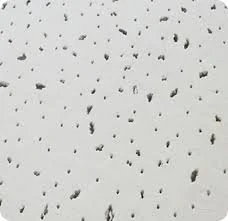Dec . 13, 2024 03:23 Back to list
ceiling access panels for drywall
Exploring Ceiling Access Panels for Drywall A Comprehensive Guide
When it comes to modern construction and interior design, various elements play critical roles in both aesthetics and functionality. One such element that often goes unnoticed is the ceiling access panel for drywall. As homes and commercial spaces become increasingly sophisticated, the importance of easy access to ceilings for maintenance and installation cannot be overstated. This article aims to delve into the significance of ceiling access panels, their types, installation processes, and benefits.
Understanding Ceiling Access Panels
Ceiling access panels are openings specially designed to provide entry to concealed areas above a drywall ceiling, typically used for accessing plumbing, electrical wiring, or HVAC systems. They are essential for maintaining the infrastructure of a building without compromising the integrity of the ceiling structure. Well-placed access panels can also enhance the convenience of repairs and upgrades, eliminating the need for more intrusive methods, such as cutting into drywall.
Types of Ceiling Access Panels
There are several types of ceiling access panels available in the market, each designed to cater to specific requirements
1. Flush Access Panels These panels are designed to sit flush with the surrounding drywall, providing a seamless finish. Ideal for living spaces where aesthetics are a priority, flush panels can be painted to match the ceiling, making them virtually invisible.
2. Hinged Access Panels These panels are hinged on one side, allowing for easy opening and access. They are often used in commercial settings where frequent access is needed. Hinged panels can support heavier materials and are available in various sizes.
3. Drop-In Access Panels Drop-in panels are designed to fit into a grid system, often found in suspended ceilings. They provide easy access to hidden areas while maintaining a clean and professional look.
4. Fire-Rated Access Panels These panels are engineered to meet specific fire safety standards and are essential in areas where fire protection is a concern. They are typically made from materials that can withstand high temperatures.
5. Acoustic Access Panels Designed for spaces that require sound insulation, acoustic access panels can help maintain sound quality while providing necessary access to mechanical systems.
Installation Process
Installing a ceiling access panel requires careful planning to ensure it meets structural and aesthetic requirements. Here’s a general overview of the installation process
ceiling access panels for drywall

2. Measurement and Marking Measure the dimensions of the access panel and mark them on the ceiling. Use a level to ensure that the panel will be straight and even.
3. Cutting the Drywall Use a drywall saw to cut along the marked lines, creating an opening for the access panel. Ensure that the cut edges are smooth to facilitate easy installation.
4. Framing the Opening Frame the opening with wooden or metal studs to provide structural support for the access panel. This step is crucial, especially for larger panels that may require additional stability.
5. Installing the Panel Follow the manufacturer’s instructions to install the access panel. For hinged or flush panels, ensure that they are securely fastened and aligned properly.
6. Finishing Touches If desired, paint the panel to match the surrounding ceiling. This helps blend the panel into the space, maintaining a professional and seamless appearance.
Benefits of Using Ceiling Access Panels
1. Easy Maintenance Access panels significantly simplify maintenance tasks, allowing quick entry to critical systems without damaging the surrounding area.
2. Cost-Effective Solutions By preventing potential damage to the underlying drywall, access panels can save costs related to repairs and renovations.
3. Improved Safety Accessing systems safely reduces the risk of accidents associated with more invasive methods of access.
4. Enhanced Aesthetic Appeal Flush access panels can enhance the overall look of a space by maintaining a clean and uninterrupted ceiling appearance.
In conclusion, ceiling access panels for drywall are an essential addition to modern building design and maintenance. Their various forms and benefits make them indispensable for both residential and commercial spaces, ensuring that the intricacies of plumbing, electrical systems, and HVAC can be managed efficiently without compromising the aesthetic value of the environment. Whether undertaking a new construction project or renovating an existing space, incorporating access panels is a wise choice that combines functionality with design elegance.
-
Quality Ceiling Trap Doors & Access Panels | Easy & Secure AccessNewsAug.30,2025
-
Durable Ceiling T Grid Systems | Easy InstallationNewsAug.29,2025
-
PVC Gypsum Ceiling: Durable, Laminated Tiles for Modern SpacesNewsAug.28,2025
-
Pvc Gypsum Ceiling Is DurableNewsAug.21,2025
-
Mineral Fiber Board Is DurableNewsAug.21,2025
-
Ceiling Tile Clip Reusable DesignNewsAug.21,2025







